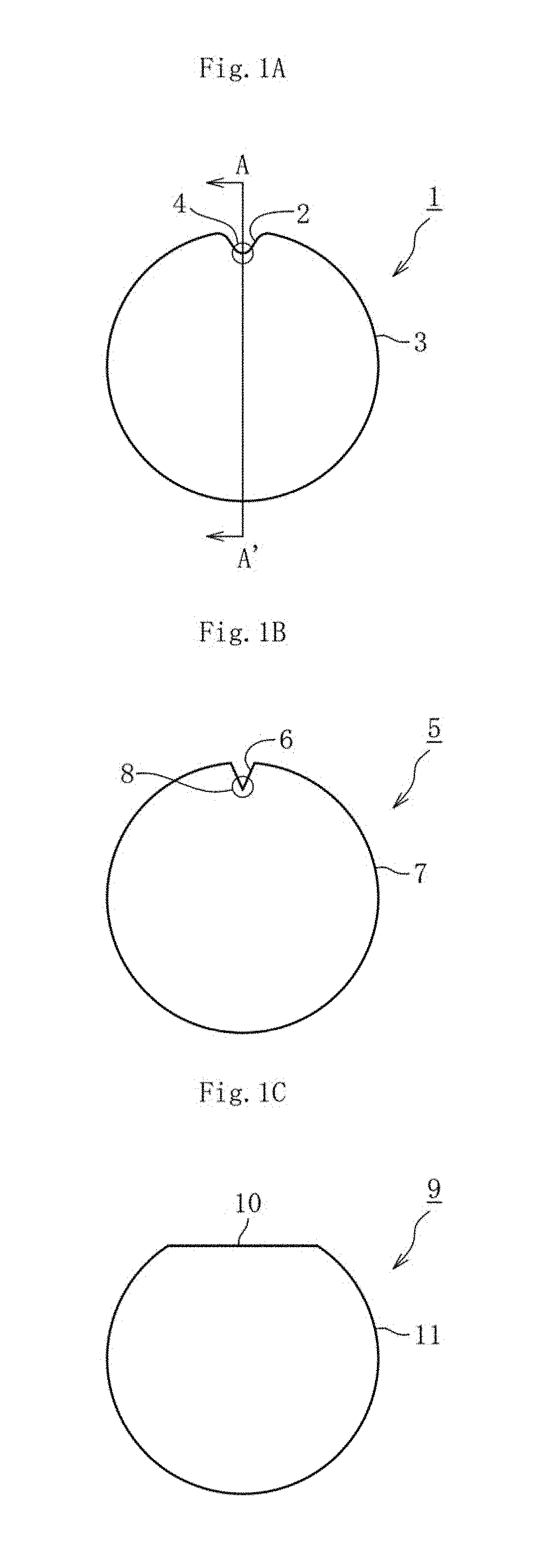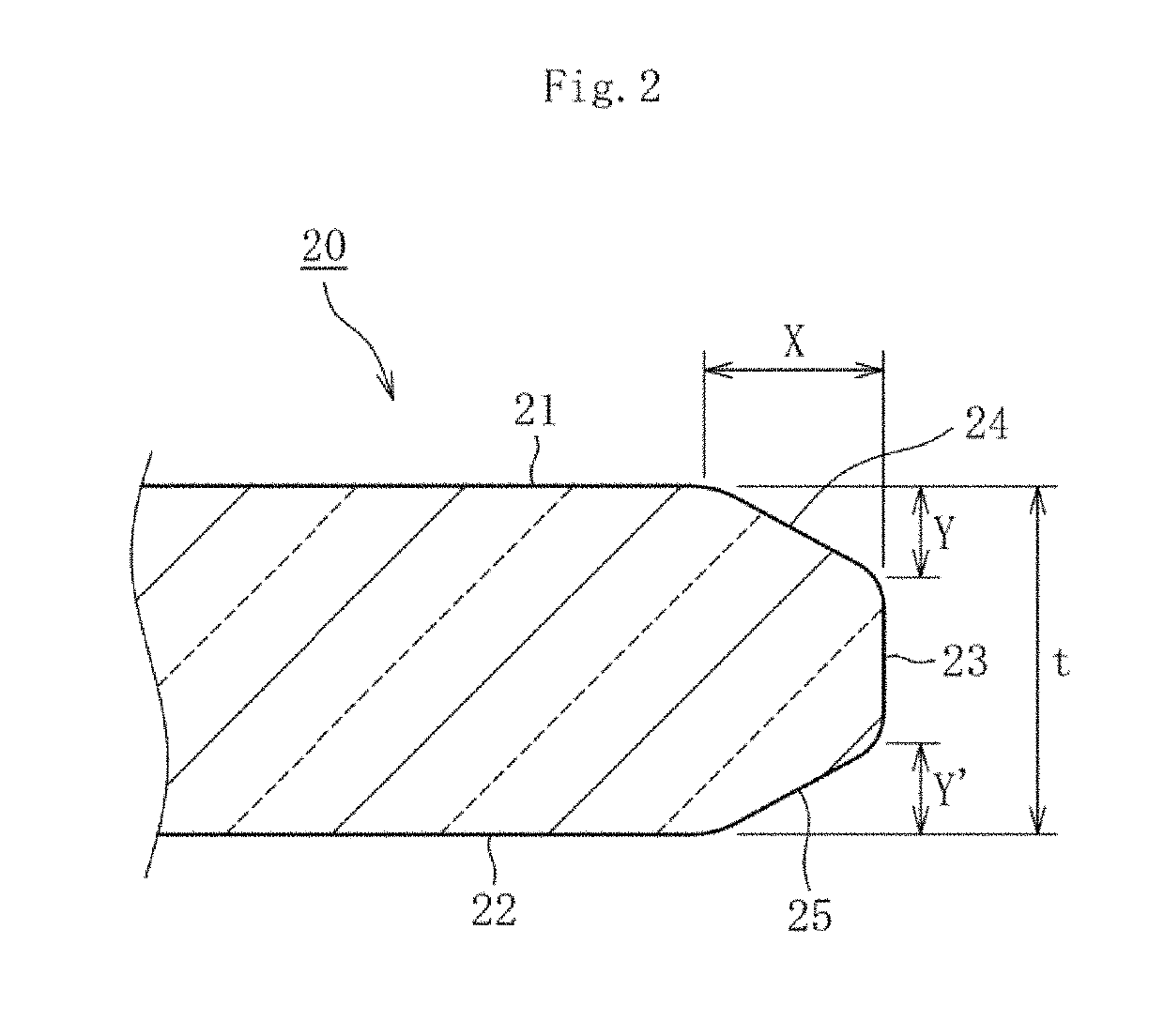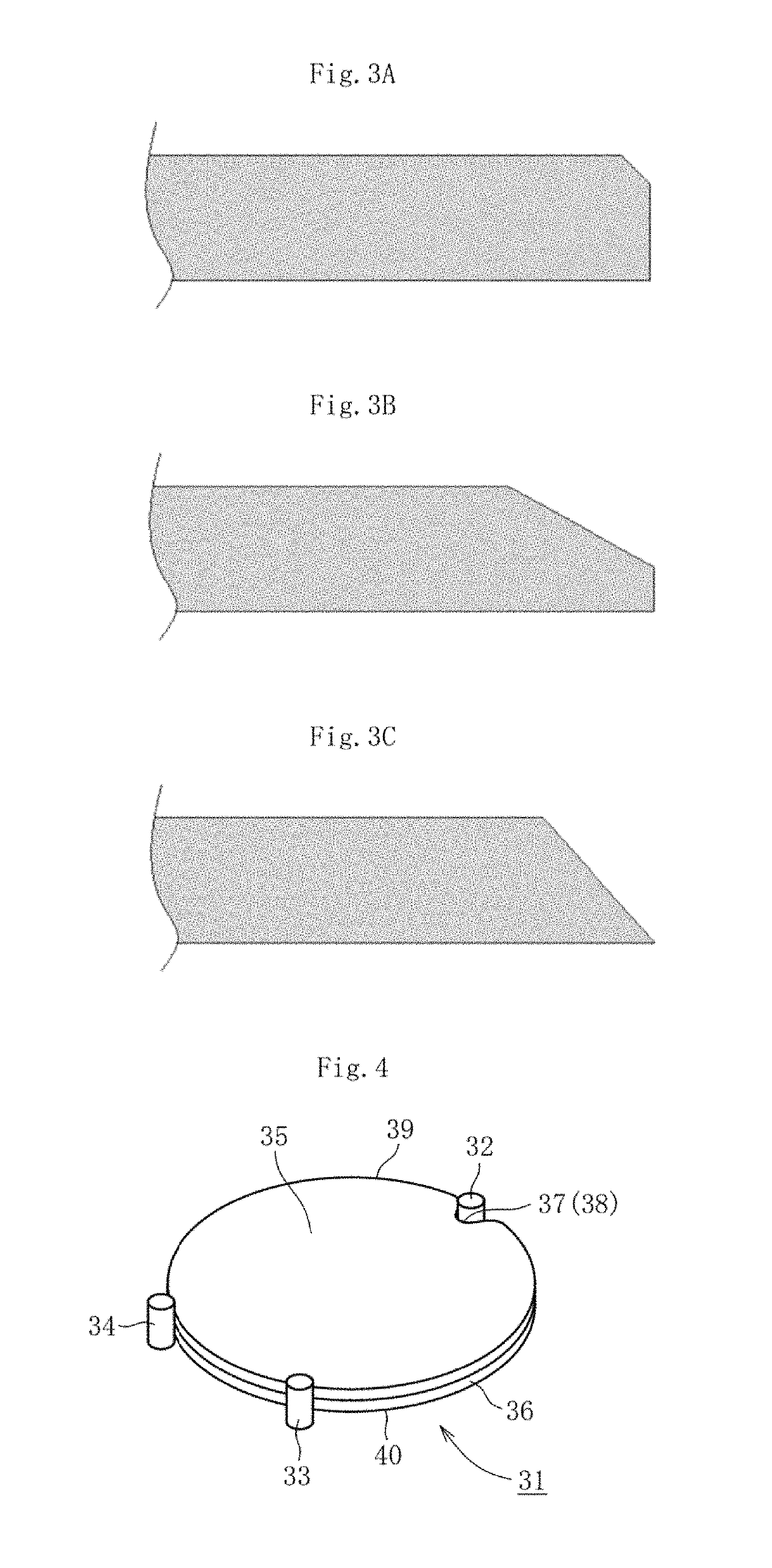Glass sheet
a technology of glass sheet and glass plate, applied in the field of glass sheet, can solve the problems of difficult to increase the number of pins, and the like of semiconductor chips, and achieve the effect of reducing the change in the dimension of the substrate, facilitating light transmission, and strong and accurate suppor
- Summary
- Abstract
- Description
- Claims
- Application Information
AI Technical Summary
Benefits of technology
Problems solved by technology
Method used
Image
Examples
example 1
[0099]Now, the present invention is described with reference to Examples. However, Examples below are merely examples, and the present invention is by no means limited to the following Examples.
[0100]Glass raw materials were blended so as to comprise as a glass composition, in terms of mass %, 65.5% of SiO2, 8% of Al2O3, 9% of B2O3, 13.1% of Na2O, 3% of CaO, 1% of ZnO, 0.3% of SnO2, and 0.1% of Sb2O3. After that, the resultant was loaded into a glass melting furnace to be melted at from 1,500° C. to 1,600° C. Then, the molten glass, was supplied into an overflow down-draw forming apparatus to be formed to a thickness of 1.0 mm. Further, the resultant was cut to a predetermined size and subjected to annealing treatment.
[0101]Next, the outer periphery of the obtained glass sheet was processed into a perfectly circular shape of σ 300 mm. After that, a semicircular recess, that is, a position alignment portion having a notch shape (depth: 1.1 mm) was formed, and the position alignment p...
example 2
[0106]First, glass raw materials were blended so as to have a glass composition of each of Sample Nos. 1 to 7 shown in Table 2. After that, the resultant was loaded into a glass melting furnace to be melted at from 1,500° C. to 1,600° C. Then, the molten glass was supplied into an overflow down-draw forming apparatus to be formed to a thickness of 0.8 mm. After that, in the same manner as in [Example 1], outer periphery processing was performed, and a position alignment portion having a semicircular recess was formed. Next, the position alignment portion and the contour portion were subjected to chamfering processing. In the chamfering processing, a chamfer width in a thickness direction was set to 50% of a thickness, and a chamfer width in a surface direction was set to 600 μm. In addition, a boundary between the position alignment portion and the contour portion of the glass sheet was processed into a continuously rounded state. Polishing pads used in the chamfering processing are...
example 3
[0115]For each of the position alignment portion and the region except for the position alignment portion (contour portion) of the glass sheet according to Sample No. 2 obtained in [Example 1], the entire end surface including the chamfered surface was subjected to mirror surface polishing treatment, and then the surface of the glass sheet was subjected to polishing treatment with a polishing apparatus by the same method as that of [Example-1]. Polishing pads used in the mirror surface polishing treatment are made of urethane, and the surface subjected to the mirror surface polishing treatment has a polishing roughness of #3000. For comparison, there was also produced a glass sheet in which the entire end surface including the chamfered surface was subjected to polishing treatment with #1500 polishing pads.
[0116]Subsequently, for each of the obtained glass sheets, the surface roughness of the end surface including the chamfered surface was measured by a method in accordance with JIS...
PUM
| Property | Measurement | Unit |
|---|---|---|
| surface roughness Ra | aaaaa | aaaaa |
| width | aaaaa | aaaaa |
| surface roughness Ra | aaaaa | aaaaa |
Abstract
Description
Claims
Application Information
 Login to View More
Login to View More - R&D
- Intellectual Property
- Life Sciences
- Materials
- Tech Scout
- Unparalleled Data Quality
- Higher Quality Content
- 60% Fewer Hallucinations
Browse by: Latest US Patents, China's latest patents, Technical Efficacy Thesaurus, Application Domain, Technology Topic, Popular Technical Reports.
© 2025 PatSnap. All rights reserved.Legal|Privacy policy|Modern Slavery Act Transparency Statement|Sitemap|About US| Contact US: help@patsnap.com



